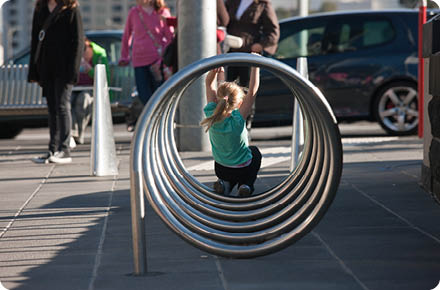worldstainless: How was stainless steel selected as the raw material for street furniture in Melbourne despite the higher initial cost?
Ian Dryden: I cannot emphasize enough that street furniture is what is seen by citizens, not the pavement or gutters. Nobody looks at the asphalt nor the gutters. When we changed the street furniture, I explained to management that investment is needed, as the furniture is what makes the city stand out visually. Keeping a city nice and tidy is important as it affects the image of the city. All of this is possible with stainless steel, it looks good and it is easy to clean and maintain.












